Signal enhancement and suppression during visual-spatial selective attention
- PMID: 20807513
- PMCID: PMC2955768
- DOI: 10.1016/j.brainres.2010.08.076
Signal enhancement and suppression during visual-spatial selective attention
Abstract
Selective attention involves the relative enhancement of relevant versus irrelevant stimuli. However, whether this relative enhancement involves primarily enhancement of attended stimuli, or suppression of irrelevant stimuli, remains controversial. Moreover, if both enhancement and suppression are involved, whether they result from a single mechanism or separate mechanisms during attentional control or selection is not known. In two experiments using a spatial cuing paradigm with task-relevant targets and irrelevant distractors, target, and distractor processing was examined as a function of distractor expectancy. Additionally, in the second study the interaction of perceptual load and distractor expectancy was explored. In both experiments, distractors were either validly cued (70%) or invalidly cued (30%) in order to examine the effects of distractor expectancy on attentional control as well as target and distractor processing. The effects of distractor expectancy were assessed using event-related potentials recorded during the cue-to-target period (preparatory attention) and in response to the task-relevant target stimuli (selective stimulus processing). Analyses of distractor-present displays (anticipated versus unanticipated), showed modulations in brain activity during both the preparatory period and during target processing. The pattern of brain responses suggest both facilitation of attended targets and suppression of unattended distractors. These findings provide evidence for a two-process model of visual-spatial selective attention, where one mechanism (facilitation) influences relevant stimuli and another (suppression) acts to filter distracting stimuli.
Copyright © 2010 Elsevier B.V. All rights reserved.
Figures
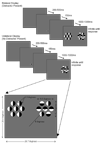

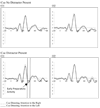





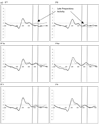



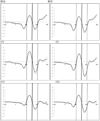

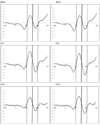



References
-
- Awh E, Matsukura M, Serences JT. Top-Down Control Over Biased Competition During Covert Spatial Orienting. Journal of Experimental Psychology: Human Perception and Performance. 2003;29(1):52–63. DOI: 10.1037/0096-1523.29.1.52. - PubMed
-
- Barnhardt J, Ritter W, Gomes H. Perceptual load affects spatial and nonspatial visual selection processes: An event-related potential study. Neuropsychologia. 2008;46:2071–2078. DOI: 10.1016/j.neuropsychologia.2008.02.007. - PubMed
-
- Bles M, Schwarzbach J, De Weerd P, Goebel R, Jansma BM. Receptive field size-dependent attention effects in simultaneously presented stimulus displays. NeuroImage. 2006;30(2):506–511. DOI: 10.1016/j.neuroimage.2005.09.042. - PubMed
-
- Braithwaite JJ, Humphreys GW, Hulleman J. Color-based grouping and inhibition in visual search: Evidence from a probe detection analysis of preview search. Perception and Psychophysics. 2005;67(1):81–101. - PubMed
Publication types
MeSH terms
Grants and funding
LinkOut - more resources
Full Text Sources

